Abstract
1. Several peptides containing either of the sequences -Phe(NO2)-Trp- and -Phe(NO2)-Phe- and an uncharged hydrophilic group were synthesized, and the steady-state kinetics of their hydrolysis by pig pepsin (EC 3.4.23.1) and chicken liver cathepsin D (EC 3.4.23.5) were determined. Despite the presence of a hydrophilic group to increase substrate solubility, it was not possible to achieve the condition [S]0 much greater than Km, and, in some cases, only values of kcat./Km could be determined by measuring the first-order rate constant when [S]0 much less than Km. 2. Occupancy of the P2 and P3 sites considerably enhanced the specificity constant, and alanine was more effective than glycine at site P2. 3. The specificity constants for the hydrolysis by pepsin of those substrates in the present series that contain an amino acid residue at site P3 are considerably lower than for comparable substrates containing a cationic group. This difference does not apply to cathepsin D. 4. Hydrolyses with cathepsin D commonly exhibited a lag phase, and a possible explanation for this is given.
Full text
PDF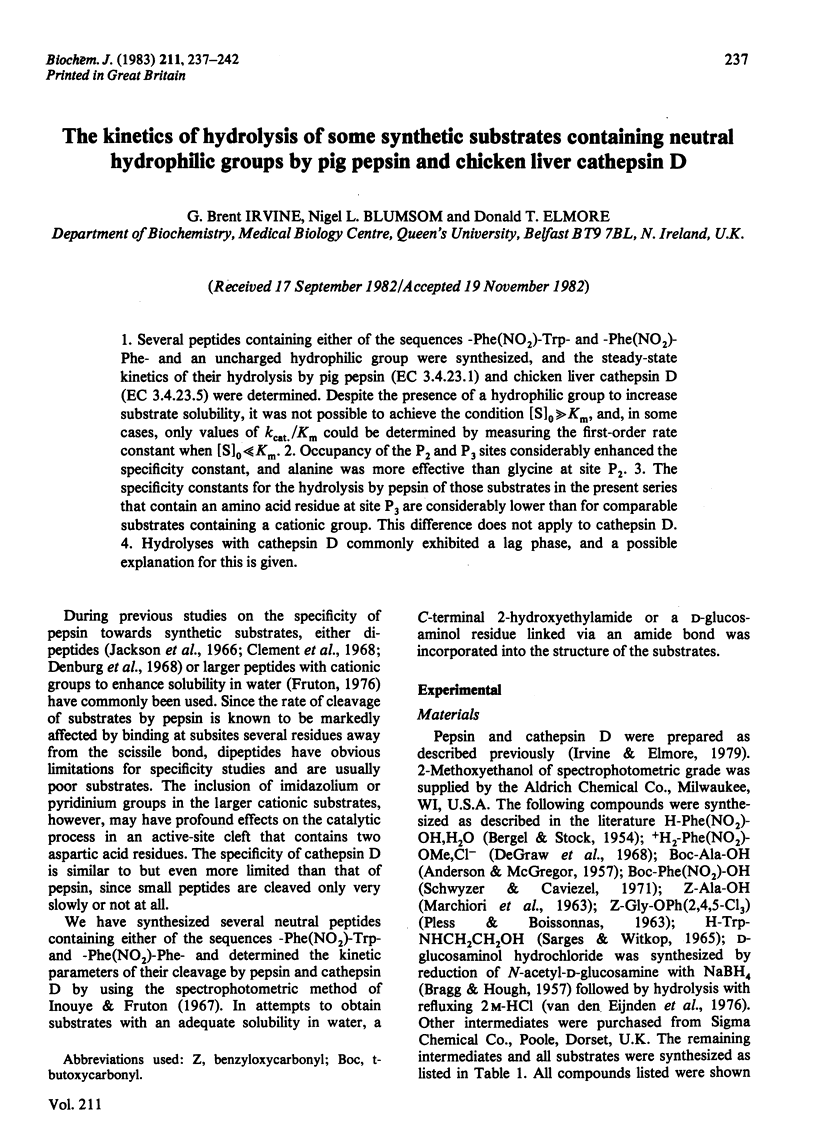
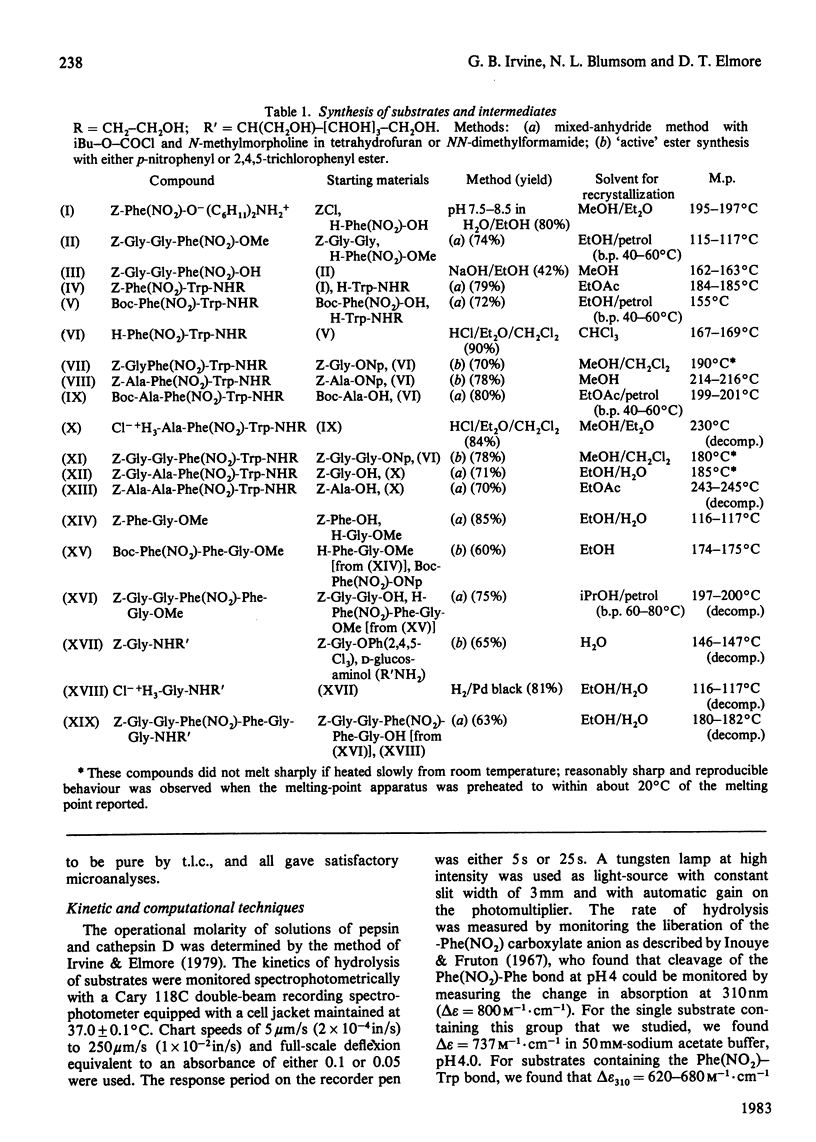
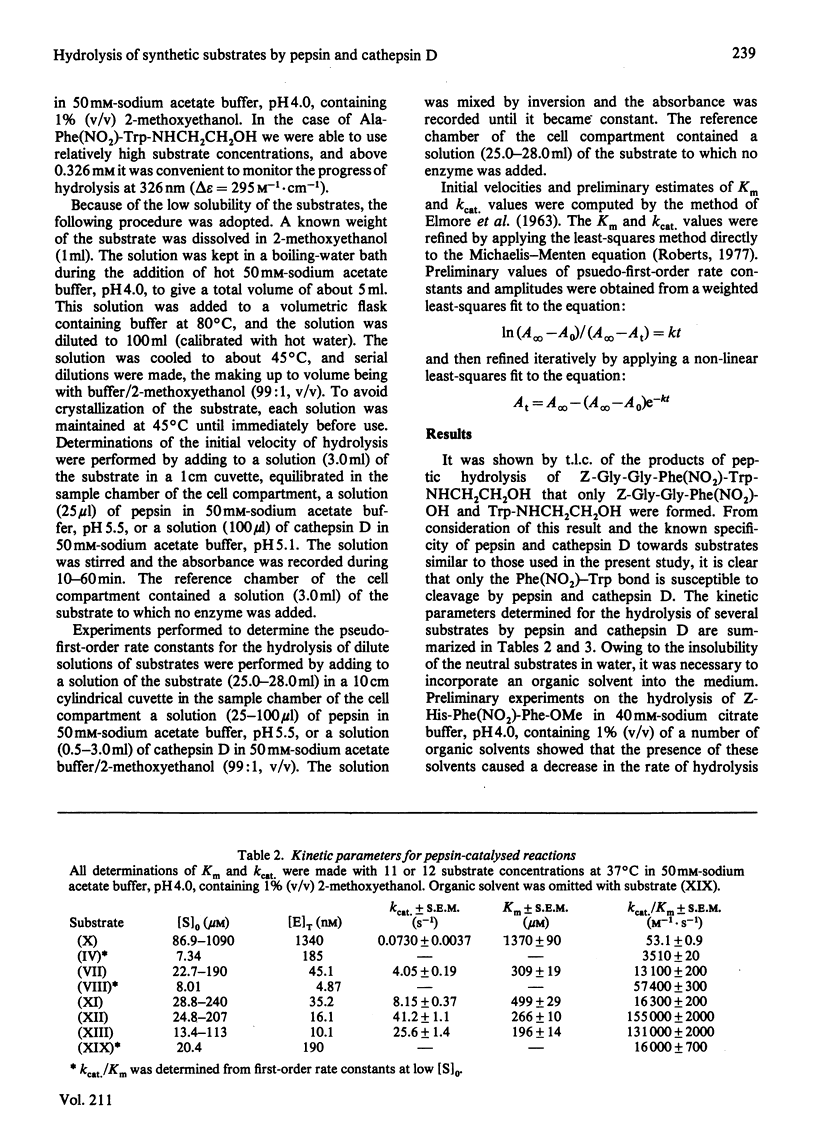
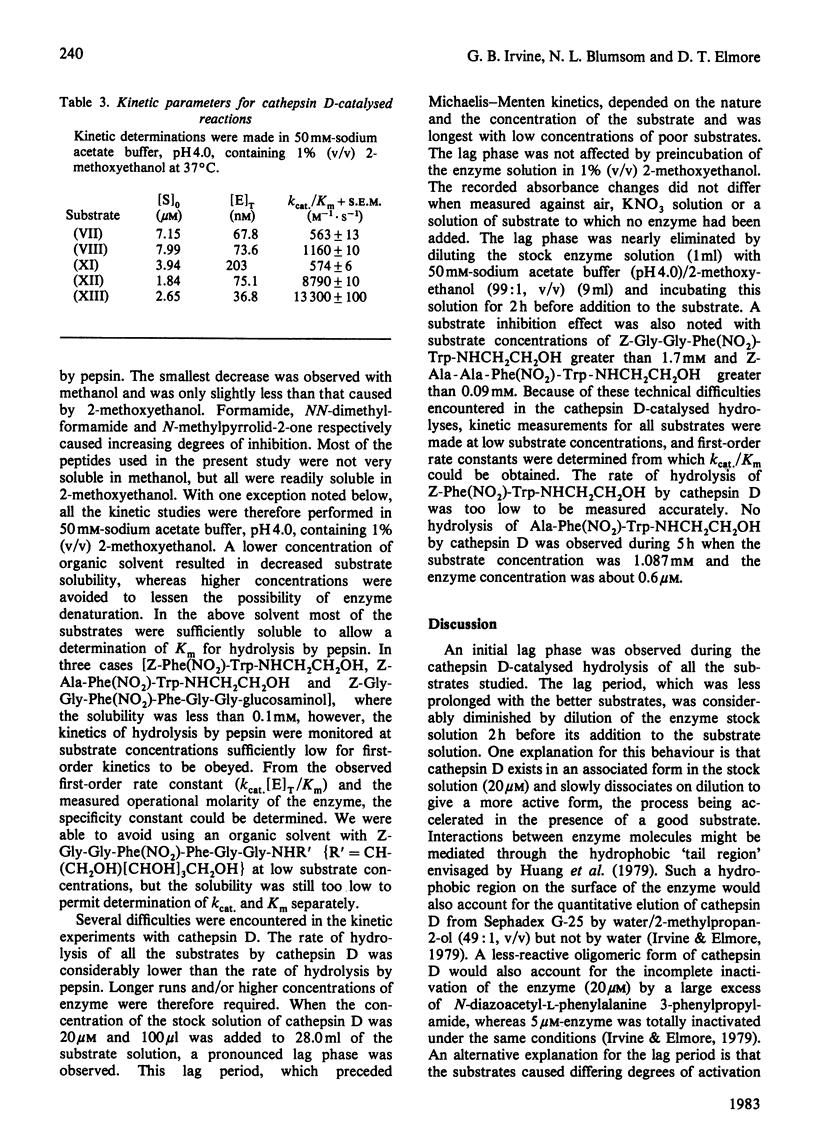
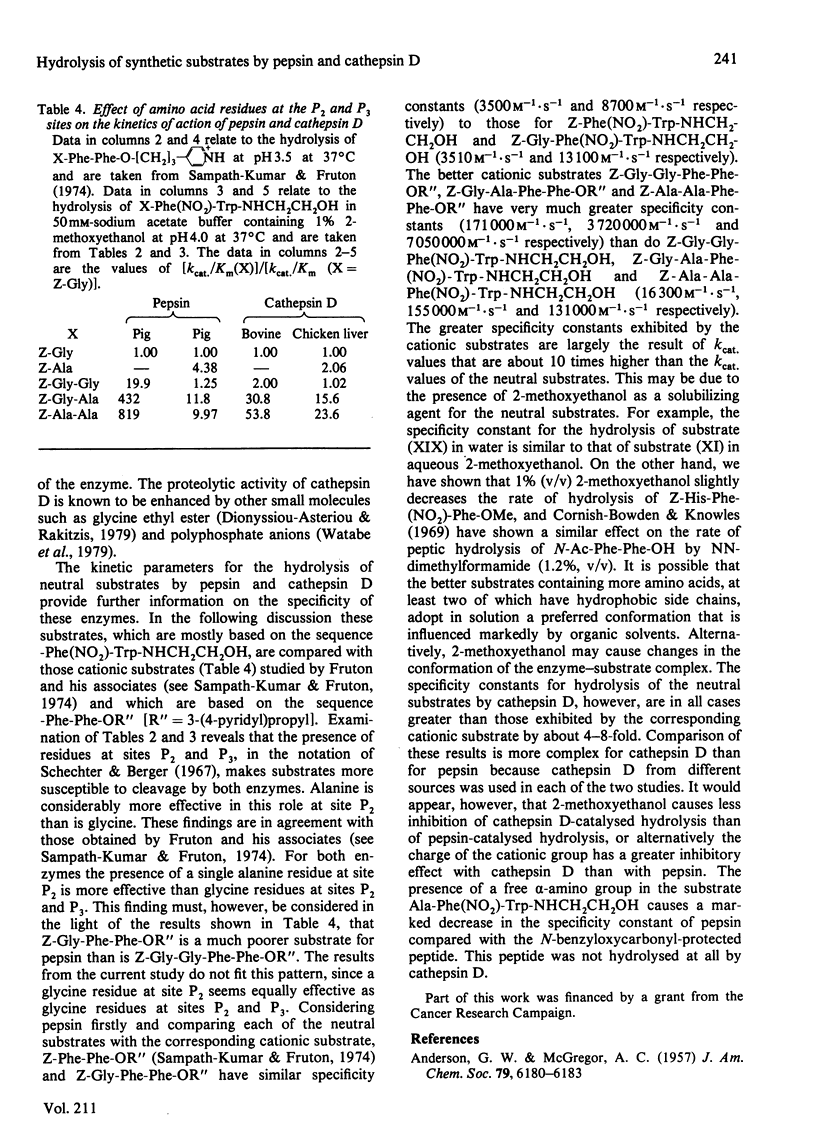
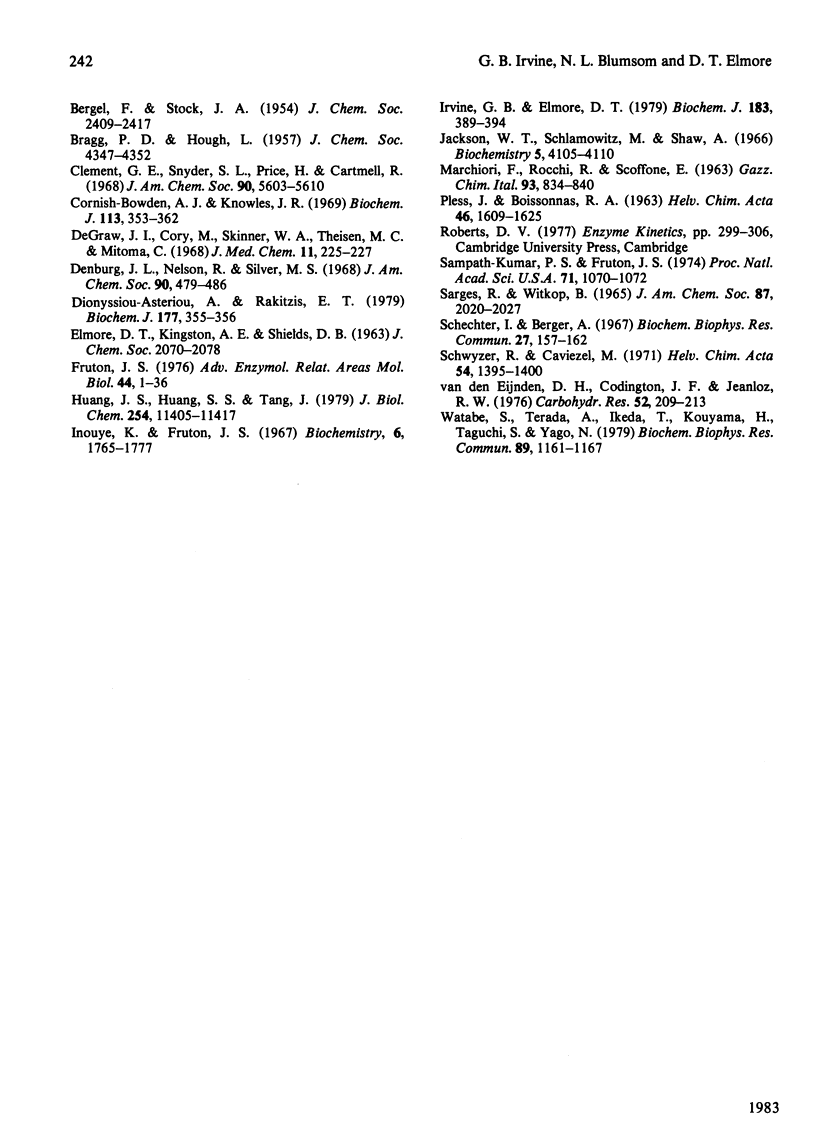
Selected References
These references are in PubMed. This may not be the complete list of references from this article.
- Clement G. E., Snyder S. L., Price H., Cartmell R. The pH dependence of the pepsin-catalyzed hydrolysis of neutral dipeptides. J Am Chem Soc. 1968 Sep 25;90(20):5603–5610. doi: 10.1021/ja01022a053. [DOI] [PubMed] [Google Scholar]
- Cornish-Bowden A. J., Knowles J. R. The pH-dependence of pepsin-catalysed reactions. Biochem J. 1969 Jun;113(2):353–362. doi: 10.1042/bj1130353. [DOI] [PMC free article] [PubMed] [Google Scholar]
- DeGraw J. I., Cory M., Skinner W. A., Theisen M. C., Mitoma C. Experimentally induced phenylketonuria. II. Potential inhibitors of phenylalanine hydroxylase. J Med Chem. 1968 Mar;11(2):225–227. doi: 10.1021/jm00308a007. [DOI] [PubMed] [Google Scholar]
- Denburg J. L., Nelson R., Silver M. S. The effect of pH on the rates of hydrolysis of three acylated dipeptides by pepsin. J Am Chem Soc. 1968 Jan 17;90(2):479–486. doi: 10.1021/ja01004a046. [DOI] [PubMed] [Google Scholar]
- Dionyssiou-Asteriou A., Rakitzis E. T. Activation of cathepsin D by glycine ethyl ester. Biochem J. 1979 Jan 1;177(1):355–356. doi: 10.1042/bj1770355. [DOI] [PMC free article] [PubMed] [Google Scholar]
- Fruton J. S. The mechanism of the catalytic action of pepsin and related acid proteinases. Adv Enzymol Relat Areas Mol Biol. 1976;44:1–36. doi: 10.1002/9780470122891.ch1. [DOI] [PubMed] [Google Scholar]
- Huang J. S., Huang S. S., Tang J. Cathepsin D isozymes from porcine spleens. Large scale purification and polypeptide chain arrangements. J Biol Chem. 1979 Nov 25;254(22):11405–11417. [PubMed] [Google Scholar]
- Inouye K., Fruton J. S. Studies on the specificity of pepsin. Biochemistry. 1967 Jun;6(6):1765–1777. doi: 10.1021/bi00858a027. [DOI] [PubMed] [Google Scholar]
- Irvine G. B., Elmore D. T. A radiochemical titrant for the determination of the operational molarity of solutions of acid proteinases. Biochem J. 1979 Nov 1;183(2):389–394. doi: 10.1042/bj1830389. [DOI] [PMC free article] [PubMed] [Google Scholar]
- SARGES R., WITKOP B. GRAMICIDIN A. VI. THE SYNTHESIS OF VALINE- AND ISOLEUCINE-GRAMICIDIN A. J Am Chem Soc. 1965 May 5;87:2020–2027. doi: 10.1021/ja01087a028. [DOI] [PubMed] [Google Scholar]
- Sampath-Kumar P. S., Fruton J. S. Studies on the extended active sites of acid proteinases. Proc Natl Acad Sci U S A. 1974 Apr;71(4):1070–1072. doi: 10.1073/pnas.71.4.1070. [DOI] [PMC free article] [PubMed] [Google Scholar]
- Schechter I., Berger A. On the size of the active site in proteases. I. Papain. Biochem Biophys Res Commun. 1967 Apr 20;27(2):157–162. doi: 10.1016/s0006-291x(67)80055-x. [DOI] [PubMed] [Google Scholar]
- Schwyzer R., Caviezel M. p-Azido-L-phenylalanine: a photo-affinity 'probe' related to tyrosine. Helv Chim Acta. 1971;54(5):1395–1400. doi: 10.1002/hlca.19710540521. [DOI] [PubMed] [Google Scholar]
- Van Den Eijnden D. H., Codington J. F., Jeanloz R. W. A micro method for the determination of the structure of substituted 2-acetamido-2-deoxy-D-galactitol and -D-glucitol residues by periodate oxidation. Carbohydr Res. 1976 Dec;52:209–213. doi: 10.1016/s0008-6215(00)85961-3. [DOI] [PubMed] [Google Scholar]
- Watabe S., Terada A., Ikeda T., Kouyama H., Taguchi S., Yago N. Polyphosphate anions increase the activity of bovine spleen cathepsin D. Biochem Biophys Res Commun. 1979 Aug 28;89(4):1161–1167. doi: 10.1016/0006-291x(79)92130-2. [DOI] [PubMed] [Google Scholar]


